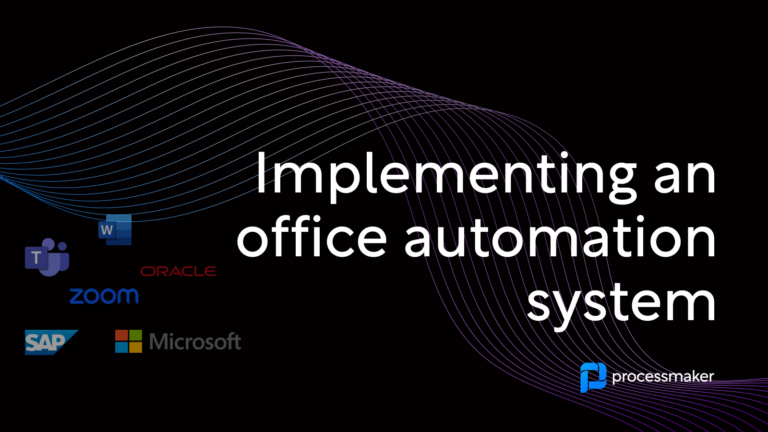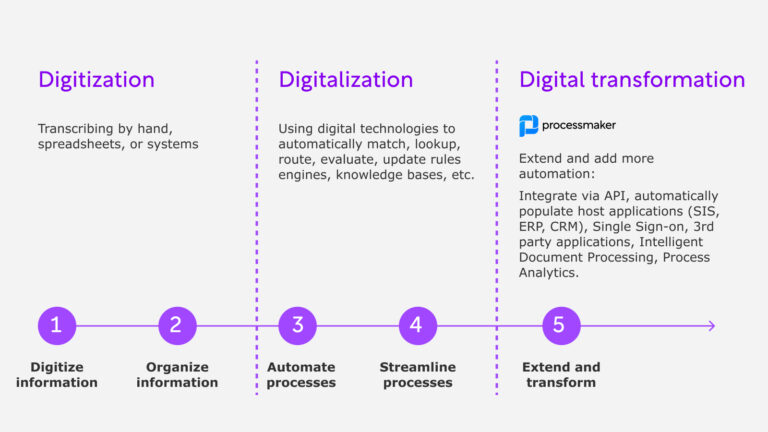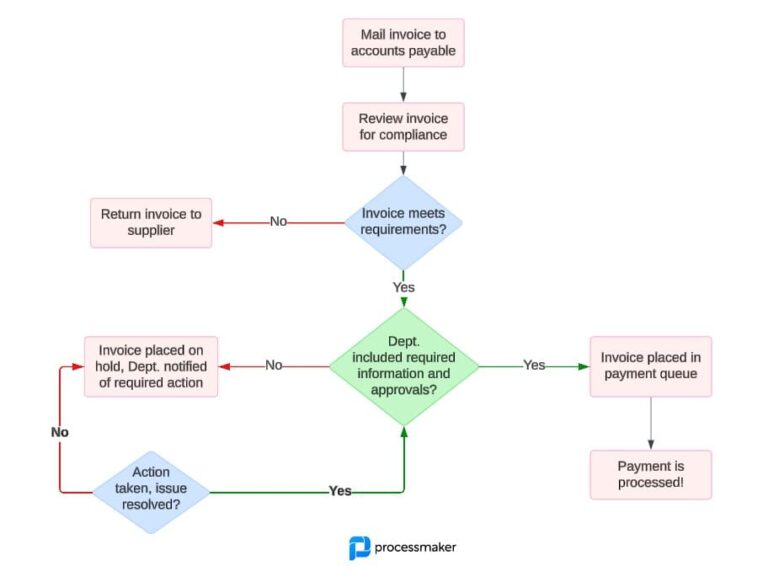There is no space in enterprise software more crowded than workflow software. It is so shockingly complicated that there are countless articles comparing one kind of workflow solution to another. With a rising number of solutions and acronyms, it is important to clarify the workflow industry and where each type of workflow platform exists in it. The easiest way to do this is to break each type of platform down. I’d say all 500, or possibly thousands, of BPM and workflow solutions in the market fit into one of these seven buckets.
1. BPM Software
The origin of workflow software. Large organizations often rely on Business Process Management (BPM) software to integrate and extend legacy systems by designing automated process applications. This is not the kind of software you sign up for and start building workflows immediately. The purchase cycle is usually three to six months and you will need a team of developers to use pretty much any BPM product on the market. Most workflow companies started in BPM and still have BPM in their DNA but what is actually changing is the way business process management is executed using workflow software.
2. Intelligent BPM (iBPMs) Software
Gartner came up with this gem to give credit to the more forward-thinking, innovative BPM software companies that added machine learning, robotic process automation, and artificial intelligence to the party. BPMs can do a lot more with this kind of intelligence, including automatically optimizing processes without human intervention and manual data analysis.
3. Low-Code Workflow Software
Low-code is the bucket most BPM providers actually fall into. Low-Code means code is still involved, but the platform may be built so the business user doesn’t need to write the code themselves. Business users experience these platforms as no-code software since IT has already developed everything they need to design, deploy, and automate custom processes. However, it is still called “low-code” due to the necessity of IT doing the initial development for reuse.
4. No-Code BPM Software
This is where it gets complicated. BPM platforms in the previous three categories are striving to be no-code but still rely on developers to build complex solutions. This category only has a few players currently in it, namely Nintex Workflow, and a large number on the way as BPM companies struggle to deliver no-code solutions. These platforms make BPM accessible to non-technical users with pre-configured connectors to popular apps and functionality and easily customizable interfaces – all with no-code.
5. Integration Platform as a Service (iPaaS)
Yes, Zapier. There are many others, but Zapier reigns supreme here. Zapier is more for the consumer, but enterprise iPaaS solutions like MuleSoft are becoming a major force to be reckoned with although technically, both are in the same category. I’d consider one consumer iPaaS and the other enterprise. These tools allow you to easily connect apps and create and automate conditional functionality without even seeing code. It’s so easy your grandmother can do it.
6. DIY Workflow Software
This is even less complicated than an iPaaS tool, but the same in principle. DIY or “do-it-yourself” workflow software refers to workflow software that is strictly built for the average consumer. This software typically helps you automate tasks in your personal life and many operating systems come with this kind of software. For example, you can set up an application that reminds you to buy milk when you arrive at the grocery store. There are also workflow software companies that fit into this category that aren’t BPM but they are workflow focused and extremely easy to use. The number of these companies is too many to count but they’re often confused as an iPaaS when really, they’re not.
7. hpaPaaS
This crazy new acronym from Gartner refers to the High-Productivity Application Platform as a Service and is defined by Gartner as: “hpaPaaS solutions provide services for declarative, model-driven application design and development, and simplified one-button deployments.” This one is kind of new, but basically all the low-code players and citizen developers are skeptical about this new space while some are claiming their newfound status on this new quadrant. Gartner’s definition of this market segment is a bit vague and the quadrant is a litany of totally different companies.
Conclusion
By now, your head is probably spinning. Despite the hundreds of types of workflow software and thousands of vendors, there is hope. Why are there so many types of workflow software? Because that’s how it always starts. As technology continues to advance the workflow space will see massive consolidation through buyouts, mergers, and in many cases, companies going out of business. We believe in the future to be in low-code / no-code BPM software that provides the simplicity of DIY while enabling IT to develop tools that empower business users to solve complex enterprise problems.





